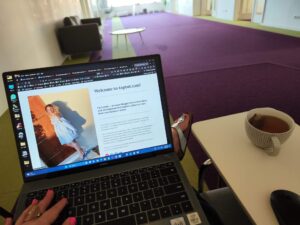Most people struggle with concentration occasionally, but for those with ADD/ADHD, maintaining focus feels like swimming upstream. This isn’t about lacking willpower – it comes from real biological differences in how the brain functions. Learning about these differences is key to developing better focus strategies.
The Impact of a Hyper-Connected World
People with ADD/ADHD face increased challenges because their devices constantly push notifications and messages. The human brain automatically responds to new stimuli which makes us unable to ignore the continual device alerts and pings. Social media distractions turn basic project work into a difficult task because of continuous digital interruptions.
Why Traditional Advice Often Falls Short?
Standard productivity methods such as list-making and strict scheduling fail to help many people with ADD/ADHD because they require consistent focus which these individuals often struggle to maintain. Traditional productivity methods require both sustained attention and sequential thought processing which turns out to be the main challenge for many individuals. When people force traditional productivity methods upon themselves it results in failure feelings and self-doubt. It becomes necessary to find new methods which function effectively with the attention patterns found in ADD/ADHD brains.
More People Face These Challenges Today
The number of individuals dealing with attention challenges continues to grow. According to the National Survey of Children’s Health, ADHD diagnoses in children ages 4-17 jumped from 7.8% in 2003 to 11.0% in 2011 – a 42% increase. The data shows a notable gender difference, with 15.1% of males diagnosed compared to 6.7% of females in 2011. For detailed information, see the National Institute of Mental Health’s ADHD statistics.
This rising trend highlights why we need focus strategies designed specifically for ADD/ADHD minds. The key is working in harmony with natural brain patterns rather than fighting against them. In the following sections, we’ll explore practical techniques that address these distinct challenges.
Creating an ADD-Friendly Environment
Strategic workspace design produces significant benefits for individuals affected by Attention Deficit Disorder (ADD).. Professionals who have ADD achieved better work productivity after they made thoughtful adjustments in their physical and digital workspaces.
Let’s look at practical ways to create a workspace that supports focus and attention:
Optimize Your Physical Environment
Lighting and Color: Adequate lighting can decrease vision discomfort while keeping you attentive. Although natural light proves to be most effective people can achieve quality results with adjustable desk lamps too. Many people with ADD find it easier to maintain focus when they work with blue and green tones because these colors create a calming effect.

Noise Management: The presence of background noise disrupts concentration almost instantly. White noise machines and quality noise-canceling headphones prove to be successful at eliminating disruptive sounds. Scientific studies demonstrate that white noise creates an auditory environment that leads to increased test performance for students by eliminating distracting sounds.
Minimalist Setup: Mental overload is less likely to occur when your environment stays tidy and orderly. Organize your desk by placing only necessary items there while establishing specific locations for your important tools and documents. People with ADD discover that bullet journaling enables them to sustain both workspace organization and workflow management.st, but adjustable desk lamps can also work well. Blue and green tones tend to have a calming effect that helps many people with ADD stay focused.
Noise Management: Background noise can quickly derail concentration. Quality noise-canceling headphones or white noise machines effectively block out distracting sounds. Research shows that white noise can help students perform better on tests by reducing auditory distractions.
Minimalist Setup: A clean, organized space helps prevent mental overload. Keep only essential items on your desk and create designated spots for important tools and documents. Many people with ADD find that using a bullet journal helps maintain an organized workspace and workflow.
Digital Environment Considerations
Screen Layouts: You need to place your windows in specific positions when working with more than one monitor. Place primary tasks in your main screen while relocating chat applications and email to a secondary screen to minimize disruptions.
Notification Management: Disable alerts that are not necessary on your electronic devices. Designate specific times to check both emails and messages to maintain uninterrupted focus instead of responding to each notification as they arrive. Successful ADD professionals report better concentration when they follow this particular approach.
Example of Digital Workspace Table:
| Feature | Distraction Potential | Recommended Action |
|---|---|---|
| Email Notifications | High | Set specific check times |
| Social Media Alerts | Very High | Disable during work hours |
| Project Management Apps | Moderate | Customize for priorities |
Learn from Real-World Examples
Many professionals with ADD have found creative ways to adapt their work environment. For example, tech project managers often design their spaces with carefully planned desk layouts and prioritized task systems. These practical changes help them work with their natural attention patterns instead of fighting against them.
By making these thoughtful adjustments to your space, you can create conditions that support focus and productivity. Small changes to your environment can lead to big improvements in how well you work and how satisfied you feel with your daily tasks.
Essential Focus Techniques for Adults With ADD
According to Dr. Huberman, staying focused presents unique challenges for adults with Attention Deficit Disorder (ADD). Recent research shows that ADD diagnoses in adults have more than doubled between 2007-2016, highlighting how widespread this condition has become. For more context on this trend, see these detailed ADD diagnosis statistics.
Quick-Win Techniques for Immediate Improvement
When you need to focus right now, several proven techniques can help you get back on track:
- Task Chunking: Break down larger projects into smaller segments so the tasks appear easy to tackle
- Pomodoro Technique: Work uninterrupted for a quarter-hour before resting for five minutes to synchronize tasks with your attention span
- Mindful Breathing: When your thoughts become disorganized, use deep breaths to restore mental clarity.
Although these methods deliver instant relief, they only provide long-term benefits once you develop stronger attention habits.
Building Long-Term Attention Capacity
Creating sustainable focus takes consistent practice and healthy routines:
- Daily Exercise: Regular physical movement enhances both mental focus and concentration power.
- Structured Routines: You will reduce mental strain and stay focused while maintaining consistent daily patterns.
- Diet and Nutrition: Natural focus enhancement occurs when you consume omega-3-rich foods together with other nutrients that boost brain health
Through regular implementation of these practices, you develop solid attention abilities.
Medication, Therapy, and Lifestyle Modifications
Most adults with ADD benefit from combining different approaches:
- Medication: The appropriate medication helps restore brain balance, which leads to improved concentration
- Cognitive Behavioral Therapy (CBT): Discover effective practical strategies for managing ADD symptoms.
- Balanced Lifestyle: Frequent practice of meditation, together with maintaining beneficial sleep patterns and steady social interactions, helps maintain clear thinking. To identify effective focus strategies, you need to work together with your doctors and monitor how different approaches affect your concentration. Do tasks that feel less overwhelming.
- Pomodoro Technique: Focus for 25 minutes, then take a 5-minute break to match your natural attention rhythm
- Mindful Breathing: Take a few deep breaths to reset your mind when feeling scattered
These methods provide quick relief, but lasting improvement requires stronger attention habits.
Building Long-Term Attention Capacity
Creating sustainable focus takes consistent practice and healthy routines:
- Daily Exercise: Moving your body regularly improves mental clarity and concentration
- Structured Routines: Following consistent daily patterns reduces mental load and helps you stay on task
- Diet and Nutrition: Eating foods rich in omega-3s and other brain-supporting nutrients enhances focus naturally
Making these practices part of your everyday life builds a strong foundation for better attention.
Finding what works for you requires open communication with your healthcare providers and careful attention to how different strategies affect your focus. Successful ADD management requires students to discover their optimal mental functioning patterns before establishing habits that enhance these patterns.
Time Management and Task Organization Strategies

People who learn to focus with ADD need to master time management and task organization strategies… I wish there was another way! When you design structures and routines that support ADD functioning you maintain important focus and increase your productivity.
Breaking Down Overwhelming Projects
Big projects often feel impossible to start when you have ADD, leading many people to put them off. The key is breaking them into bite-sized pieces:
- Create small, specific tasks: Each part should take 30 minutes or less to complete, giving you quick wins that build momentum.
- Map it out visually: Simple drawings or diagrams can make complex projects feel more manageable and show your progress.
This approach helps maintain focus while giving you a sense of accomplishment with each completed step.
Priority Setting Aligned with Natural Attention Patterns
Making a to-do list isn’t enough – you need to match tasks to your natural energy patterns. People who manage ADD successfully often:
- Track when focus is strongest: Schedule important work during your peak attention hours.
- Match task intensity to energy: Handle challenging work early when fresh, easier tasks later when tired.
Recent Swedish research shows that while ADD diagnosis rates have increased, actual symptom levels remain stable over time. This highlights why personalized approaches work best. Read the full research here.
Avoiding Procrastination Traps
ADD often comes with impulsivity that makes procrastination tempting. Counter this by:
- Creating mini-deadlines: Break long timelines into shorter checkpoints to maintain urgency.
- Finding an accountability buddy: Share your goals with someone who will check in on your progress.
Maintaining Daily Momentum
Since interruptions hit ADD minds especially hard, try these techniques to stay on track:
- Use timed work blocks: The Pomodoro method’s short sprints help sustain energy and prevent burnout.
- Set up regular reminders: Simple alerts keep important deadlines top of mind without being overwhelming.
With practice, these strategies can help anyone with ADD turn potential distractions into focused productivity. The key is finding the specific approaches that match your needs and building them into daily habits.
Digital Tools and Apps for Enhanced Focus
Getting work done with Attention Deficit Disorder (ADD) requires the right digital tools. While many productivity apps claim to boost focus, finding ones that truly help without adding distractions can be challenging.

Let’s explore proven tools and strategies that help people with ADD stay focused and organized.
Apps That Support Task Tracking and Management
The right task management tools can make a big difference for ADD minds. Here are some of the most helpful options:
- Todoist and Trello help break big projects into smaller, more manageable pieces. Studies show this task breakdown approach can boost productivity by 20%.
- Focus@Will provides scientifically-designed music to enhance concentration. Users report up to 400% improvement in their ability to focus while using the app.
Creating a Supportive Digital Environment
Your digital workspace setup plays a key role in maintaining focus. Consider these practical approaches:
- Smart Notification Settings: Use apps like Freedom and Cold Turkey to block distracting websites and turn off non-essential notifications during focused work time.
- Strategic Screen Setup: Using multiple monitors with dedicated purposes helps reduce task-switching and maintains attention on the current activity.
| App/Tool | Key Benefit | Recommended Use |
|---|---|---|
| Todoist | Task segmentation | Priority and deadline tracking |
| Trello | Visual task management | Workflow organization |
| Focus@Will | Calming, concentration-enhancing soundtracks | Use during deep work sessions |
| Freedom/Cold Turkey | Block distracting sites | Restrict access to unproductive sites |
Successful Practices from Professionals with ADD
Many successful professionals combine different tools to manage their ADD effectively. For instance, pairing the Pomodoro Technique with apps like Forest creates a structured approach – focused work periods followed by short, refreshing breaks.
Avoiding the Pitfalls
Tools should help, not hinder your workflow. Keep these guidelines in mind:
- Choose tools that match your work habits: Adjust settings to fit your natural attention patterns.
- Check tool effectiveness regularly: Make sure your apps still support your productivity goals.
Finding the right mix of digital tools can create an environment where focus comes more naturally. The key is selecting and combining tools that work with your ADD, not against it. Whether you need help tracking tasks or maintaining concentration, the right digital support system can lead to better attention management.
Conclusion: Building Sustainable Focus Habits
Today, we have discussed how to focus with ADD and realized that the key to success lays in building healthy habbits.

People with ADD can significantly improve their focus by establishing daily routines that work with their natural thinking patterns. Research shows that converting helpful activities into consistent habits leads to better concentration over time.
Developing Habits That Stick
Good habits form the foundation for better focus. Here are proven ways to make new habits last, especially for those with ADD:
- Start Small: Choose simple changes you can maintain daily. For example, begin with just 5 minutes of morning meditation to build consistency.
- Anchor Habits: Connect new behaviors to existing routines. Use brushing your teeth as a reminder to write in your journal, which helps organize thoughts.
- Visual Cues: Put up sticky notes, checklists, or other visual reminders to keep your mind engaged with forming new habits.
Tracking Progress and Adjusting Strategies
Keeping tabs on your focus improvement helps maintain momentum:
- Use Journals or Apps: Writing down your daily wins increases commitment. People tend to stick with focus habits better when tracking their progress.
- Regular Reviews: Take time each week to evaluate what’s helping. Modify your approach based on what you learn works best for you.
Maintaining Motivation Through Challenges
Staying motivated isn’t always easy, particularly during tough periods. Here’s how to keep going:
- Accountability Partners: Tell a friend about your focus goals. Having someone check in on your progress makes it harder to slip back into old patterns.
- Celebrate Small Wins: Notice and reward minor improvements. This positive reinforcement helps cement new habits.
Techniques for Building Resilience
Bouncing back from distractions is a vital skill:
- Learn From Setbacks: View disruptions as chances to improve. Figure out what threw you off track and plan better responses for next time.
- Practice Self-Compassion: Remember that ADD brings unique challenges. Being kind to yourself helps you persist through difficulties.
These focus-building habits can boost both your productivity and life satisfaction. Find more personalized strategies to support your daily routines on Lorelei Web.

Lorelei has been an online entrepreneur, marketer and writer since 2006. Her biggest passion is WordPress, which is why she switched to being a full-time blogger 20 years ago and hasn’t looked back since. With so many years of experience behind her, she is an expert in copywriting, SEO, marketing and business strategies.






